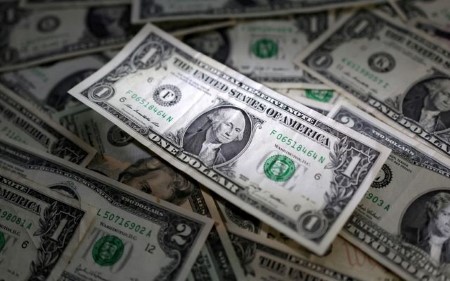




Monthly Economic Update: One for the road
 DOWNLOAD
DOWNLOAD

Inflation Update: Still low, still slow
 DOWNLOAD
DOWNLOAD

Philippines Trade Update: Exports momentum continues
 DOWNLOAD
DOWNLOAD


Dollar down for second month, but well off its worst

July 31 (Reuters) – The dollar index is finishing July down 1.1%, after a similar loss in June, but it is well off its intra-month lows as the Fed, ECB, and BoJ are either at, or near, key policy inflection points.
Friday’s dollar index recovery high hit important resistance by the June lows it crashed below earlier this month. Whether those hurdles will be cleared may well depend on US ISM, JOLTs and employment reports out later this week.
On Monday, the dollar was modestly lower against the euro and sterling, which had rebounded from July lows on Friday following below-forecast US core PCE and ECI that favored the Fed being done with rate hikes.
But Chair Jerome Powell made clear last week that policy remained data-dependent and rate cuts were unlikely this year.
Monday provided just second-tier US data, while Chicago Fed President Austan Goolsbee affirmed the Fed’s data dependence, but with a note of optimism about the potential for a “golden landing”; AKA soft landing where inflation recedes without causing a recession.
The dollar and most other currencies rose versus the yen for a second day as yen longs taken ahead of Friday’s BoJ meeting, on the risk the BoJ would loosen or remove its cap on 10-year JGB yields, covered losses.
That as the BoJ’s policy shift greatly underwhelmed and the BoJ on Monday bought 10-year JGBs at 60bps, much closer to its prior 50bp cap than the new hard cap at 100bps. That renewed QE also fed into risk-on flows that favored the yen as a funding currency.
USD/JPY rose 0.7%, EUR/JPY 0.65%, GBP/JPY 0.63%, and high beta AUD/JPY 1.8%. The Aussie was again aided by hopes ongoing Chinese promises to do more to support its struggling economy will eventually result in tangible policy changes and that the RBA on Tuesday will remain hawkish. USD/CNH fell 0.09%, showing no strong buy-in yet on China’s renewed growth prospects.
Bund, gilts, and Treasury yields were initially drawn higher by JGB yields extending their post-BoJ meeting advance, but they then drifted lower as month-end and key US data drew near.
(Editing by Terence Gabriel; Randolph Donney is a Reuters market analyst. The views expressed are his own.)
This article originally appeared on reuters.com





 By Reuters
By Reuters